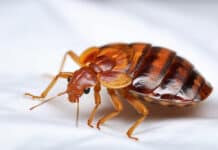Posted by Heidi Schwartz
 As temperatures begin to rise and the ground gradually warms, termites will emerge to launch an attack on vulnerable facilities across the country. To promote public vigilance against termites, the National Pest Management Association (NPMA) recognizes March 15-21 as Termite Awareness Week. With this recognition in mind, facility managers should be prompted to be aware of the threat of termites and the possible signs of an infestation this spring.
As temperatures begin to rise and the ground gradually warms, termites will emerge to launch an attack on vulnerable facilities across the country. To promote public vigilance against termites, the National Pest Management Association (NPMA) recognizes March 15-21 as Termite Awareness Week. With this recognition in mind, facility managers should be prompted to be aware of the threat of termites and the possible signs of an infestation this spring.
Termites date back more than 120 million years to the time of the dinosaurs. Each year, they can cause more than $5 billion in property damage. Termites can often be found in unexpected places and may cause serious destruction. Subterranean termites can collapse a building entirely, destroy plastic plumbing pipes, and even damage swimming pool liners. Their hard, saw-toothed jaws work like shears and are able to bite off extremely small fragments of wood, one piece at a time.
Their constant gnawing can go unnoticed until significant structural damage occurs, thus giving them the reputation of being “silent destroyers.” Termites will feed 24 hours a day, seven days a week on the cellulose found in wood and paper products.
“Winged swarmers are often the first sign that termites have invaded. They typically emerge in the spring to create new colonies. If seen indoors, they are evidence that you already have termites. If seen outdoors, they are indicative of the likelihood of current or impending infestation.” said Jerry Lazarus, owner of Braman Termite and Pest Elimination. “It’s important [for facility managers] to remain vigilant for signs of these wood-destroying pests in and around the property.”
The NPMA offers the following signs that termites may be present:
- Brown pencil size mud tubes (used by termites to reach a food source) on the exterior foundation or on basement structural elements.
- Wood in the house that sounds hollow when tapped.
- Darkening or blistering of wood structures.
- Cracked or bubbling paint.
- The sudden emergence of a multitude of flying insects.
- Small black insects crawling near doors, on windowsills, or on the cellar floor along with translucent wings that have been shed by the swarmer.
To help prevent termites, it is important to prevent water from accumulating around the foundation of a building by diverting it away with properly functioning downspouts, gutters, and splash blocks. In addition, it is recommended to reduce humidity in crawl spaces with proper ventilation. However, the most essential step is to eliminate wood contact with the soil by maintaining a one-inch gap between the soil and wood portions of the building.
The NPMA encourages facility managers to obtain termite inspections or a wood destroying organism (WDO) inspection with some degree of regularity. Termite inspectors are trained to recognize signs of current or past infestations. They will also look for any conditions in the facility that may attract termites in the future.

















![[VIDEO] Collect Asset Data at the Speed of Walking a Building](https://facilityexecutive.com/wp-content/uploads/2024/02/maxresdefault-324x160.jpg)